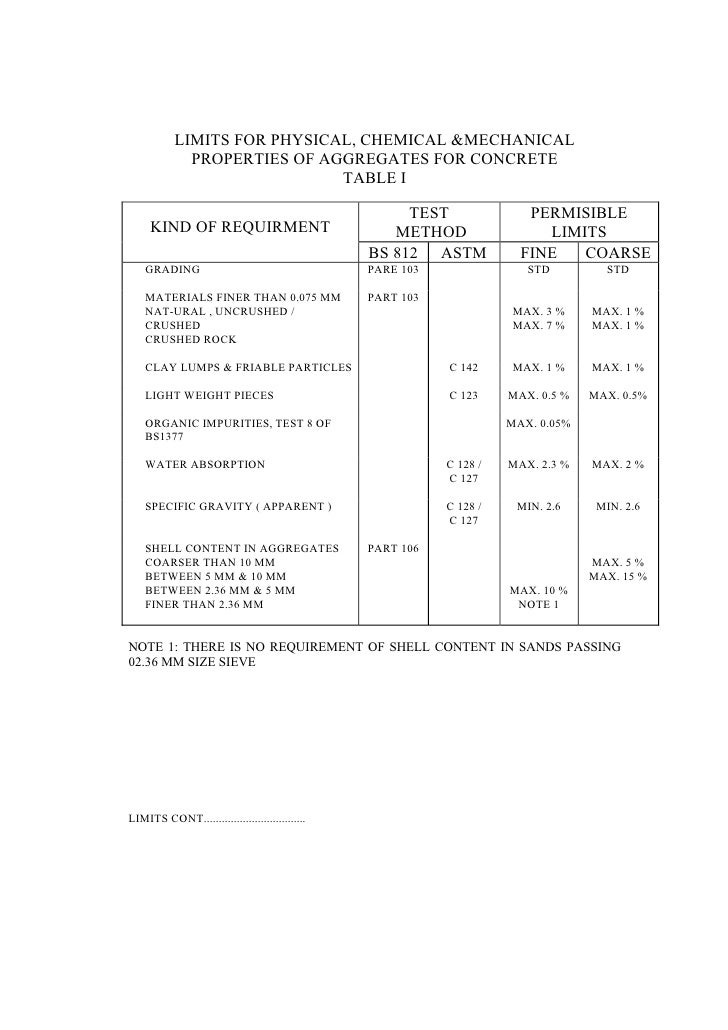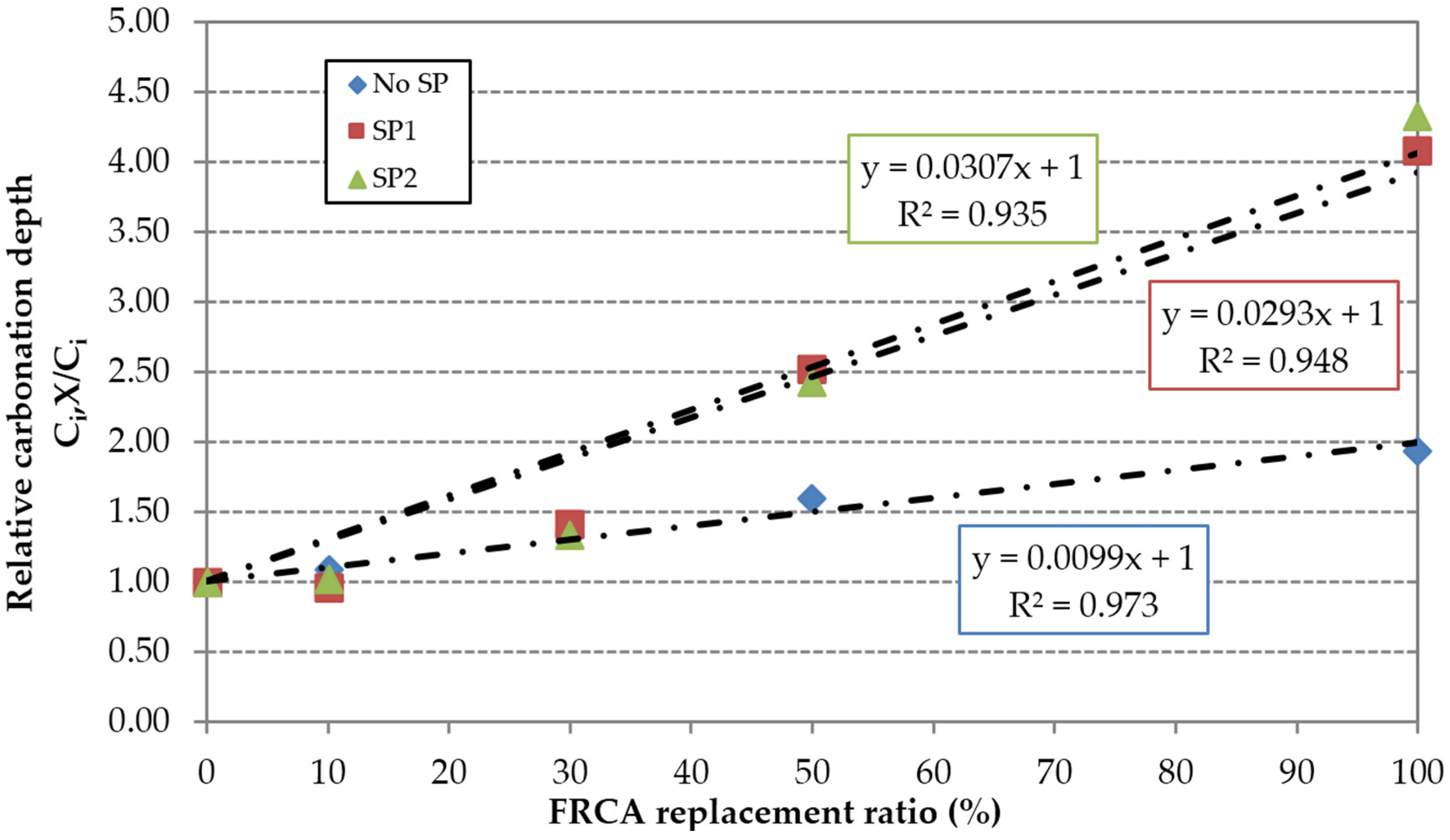This paper is focused on properties of recycled aggregate. Three types of recycled aggregate were used for experiment (designation REC A, REC B and REC C) and for comparison natural aggregate (designation NA). The geometrical and physical properties of recycled aggregate were tested. The test results were comparison with natural aggregate.
- Class 5 Aggregate Properties
- Tests For Geometrical Properties Of Aggregate Calculator
- Lab Tests On Fine Aggregate
The results confirmed that the quality of the recycled aggregate depends on kind of demolishing process and subsequent recycling process in the recycling plant. Abstract: The subject of concrete recycling is regarded as very important in the general attempt for sustainable development in our times. Due to a wide range of variability of engineering properties for recycled concrete, a large number of experiments are usually required to decide a suitable mixture. Within the scope of this study, 13 different concrete mixtures were manufactured.
The Nun – $53,807,379. Paranormal Activity 3 – $52,568,183. Us jordan peele movie torrent 2016.
Physical Properties of Aggregates 54. Aggregate tests – Consensus properties - required – Source properties - optional. Aggregate criteria – Based on aggregate blend – Based on traffic and depth into pavement. Design aggregate structure – 0.45 power chart – Controls points and restricted zone. Aggregates are available in nature in different sizes. The size of aggregate used may be related to the mix proportions, type of work etc. The size distribution of aggregates is called grading of aggregates. Following are the classification of aggregates based on size: Aggregates are classified into 2 types according to size. Fine aggregate.


Class 5 Aggregate Properties
The amount of recycled concrete aggregate (RCA) were 0%, 20%, 40%, 60%, 80%, and 100%, respectively. The replacement levels of ultra-fine fly ash are 0%, 15%, 25%, 35% and 50%, respectively. The physical and mechanical properties along with their workability of concrete produced with RCA and ultra-fine fly ash were investigated. The experiment results showed that ultra-fine fly ash replacement had an important effect on performance of concrete with different amount of RCA. Abstract: Although the adhered mortar content affects the properties of recycled aggregate concrete, there are few papers describing those effects.
This paper presents the results of a series of experimental study on the effects of adhered mortar content on the quality of recycled coarse aggregate of concrete. 5 kinds recycled coarse aggregates made with heating and rubbing method, mechanical crashing method and separating lightweight particle with water stream method were tested for specific gravity, absorption and adhered mortar content. Specific gravity in oven-dried condition ranged from 2.35g/cm 3 to 2.59 g/cm 3, absorption ranged from 1.58% to 5.83% and adhered mortar content ranged from 8.0% to 68.4%, depending on manufacturing method of recycled aggregate. Absorption decreased linearly with the increase of specific gravity.
Tests For Geometrical Properties Of Aggregate Calculator
Specific gravity decreased and absorption increased with the increase of adhered mortar content. Recycled aggregate made by heating and rubbing method showed lower adhered mortar content corresponding to lower absorption and higher specific gravity, while those made by mechanical crushing method showed higher adhered mortar content corresponding to higher absorption and lower specific gravity.
In conclusion, the upper limit of adhered mortar content of recycled coarse aggregate is considered to be 15%, in order to keep up the quality of coarse aggregate and properties equal to natural coarse aggregate. Abstract: Two classification methods for coarse recycled aggregate used in asphalt concrete were investigated in this paper, respectively classifying by coarse recycled aggregate properties and asphalt concrete properties. When classifying by coarse recycled aggregate properties, coarse recycled aggregate was classified into three types by the apparent specific gravity, water absorption, crushed value, Los Angeles abrasion value and brick content of coarse recycled aggregate. When classifying by asphalt concrete properties, coarse recycled aggregate was used to prepare asphalt concrete; and coarse recycled aggregate was classified into three types by the optimum asphalt content ratio (R OAC), theoretical maximum specific gravity ratio (R TMSG) and indirect tensile strength ratio (R ITS) of asphalt concrete containing coarse recycled aggregate. The proposed classification criterions of the two classification methods were respectively given.
Abstract: Recycled concrete aggregate (RCA) and crushed clay bricks (CCB) have been increasingly researched and used in past two decades. However, studies focusing on the properties of dry-mortar with RCA and CCB are very limited. In this research, results from physical and mechanical properties of recycled mortar with fine recycled aggregate (FRA), fine recycled powder (FRP) and crushed clay brick (CCB) were secured.
Lab Tests On Fine Aggregate

It is shown that sinking degree of FRA mortar can be adjusted in the range of 70-90mm and their water-maintainability is superior to natural sand mortar. However, compressive strength of FRA mortar at various ages decrease, compared to natural sand mortar under the condition of same mixed proportion. Compressive strength of FRA mortar is above 5.0MPa with mass ratio of aggregate to cement lower than 6.0.Workability of FRP and CCB mortar is similar to fly ash mortar and their apparent densities are under the 2.0g/cm 3. Compressive strength of FRP and CCB mortar is near to 8.5 MPa at 28 days of age.
The Amber document status indicator indicates that some caution is needed when using this document - it is either:. (a) current in the Construction Information Service but has a document or documents that replace or amend it, so please look at the 'Newer Versions' tab or. (b) not in the Construction Information Service but with another reason why it may be relevant to our customers such as being cited in NBS or in the Building Regulations Approved Documents. Again there may be more recent versions of the document.